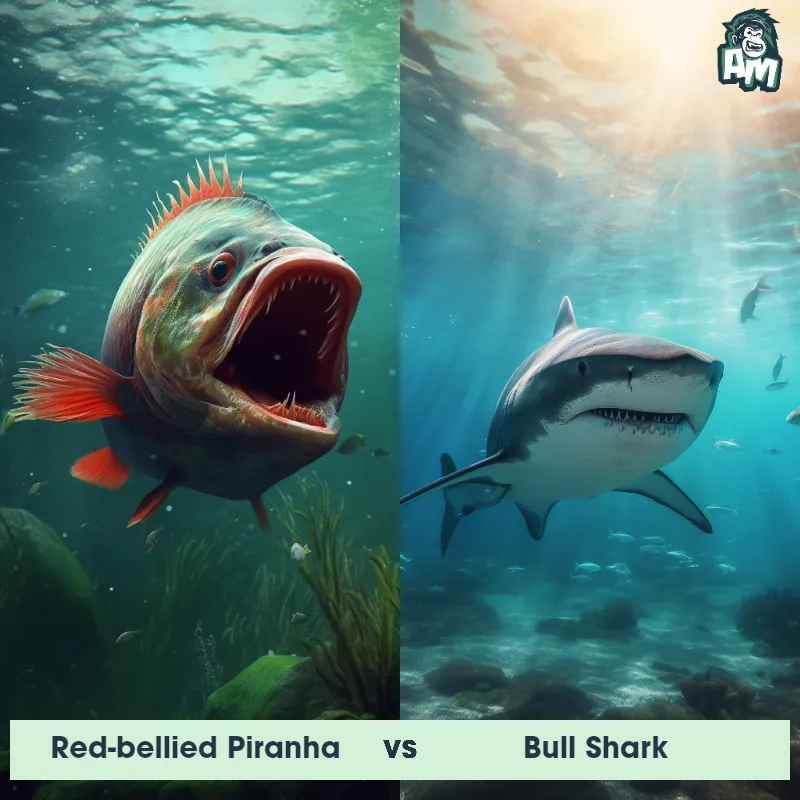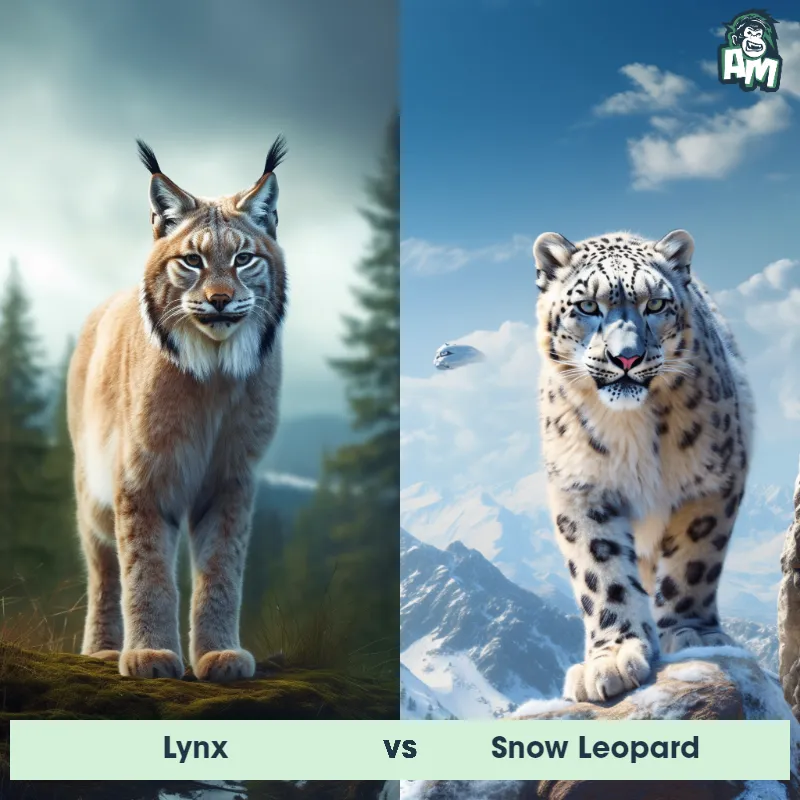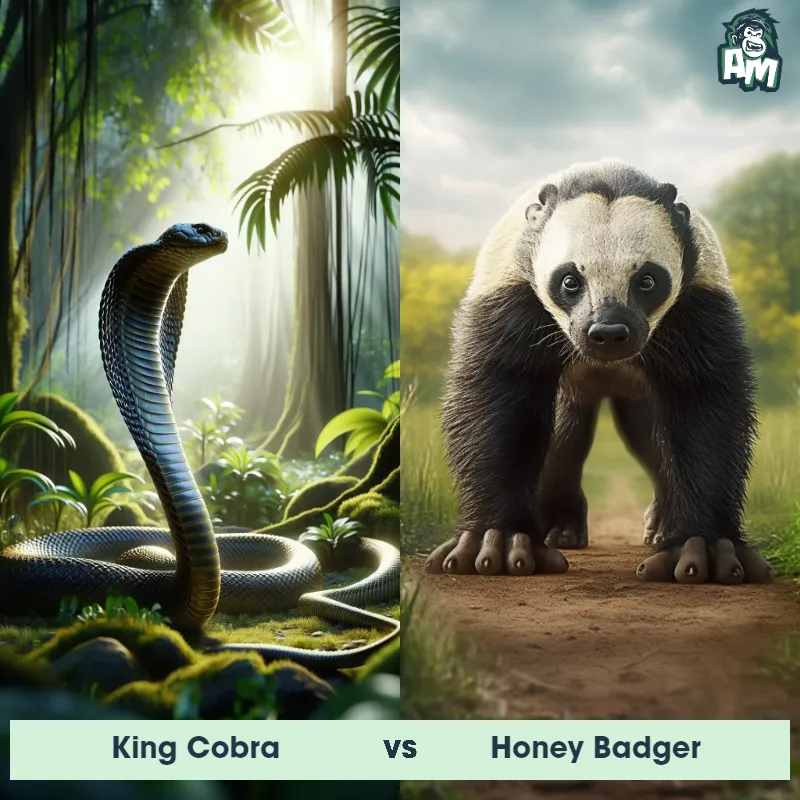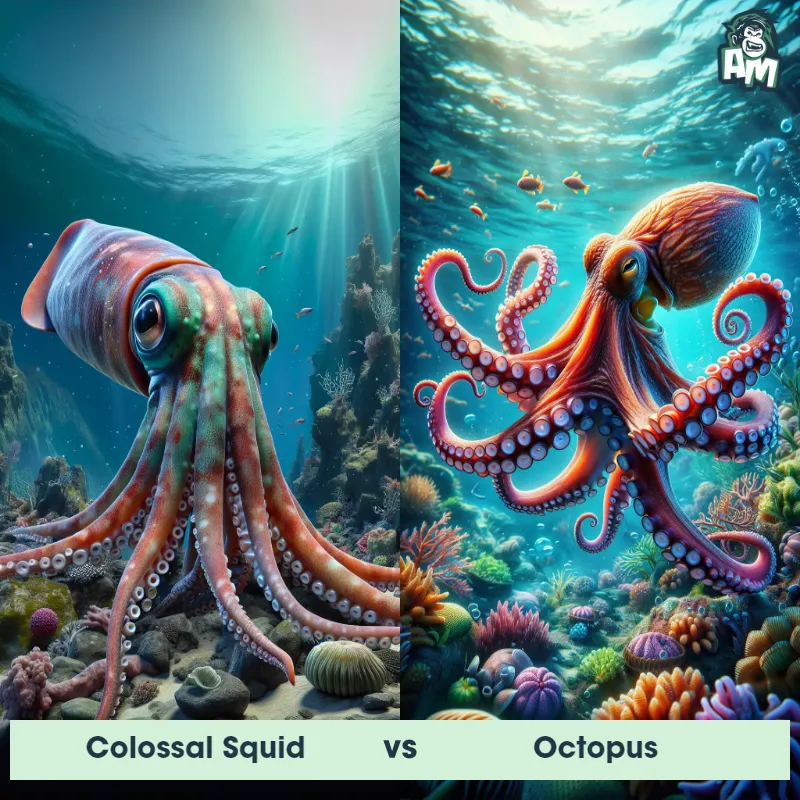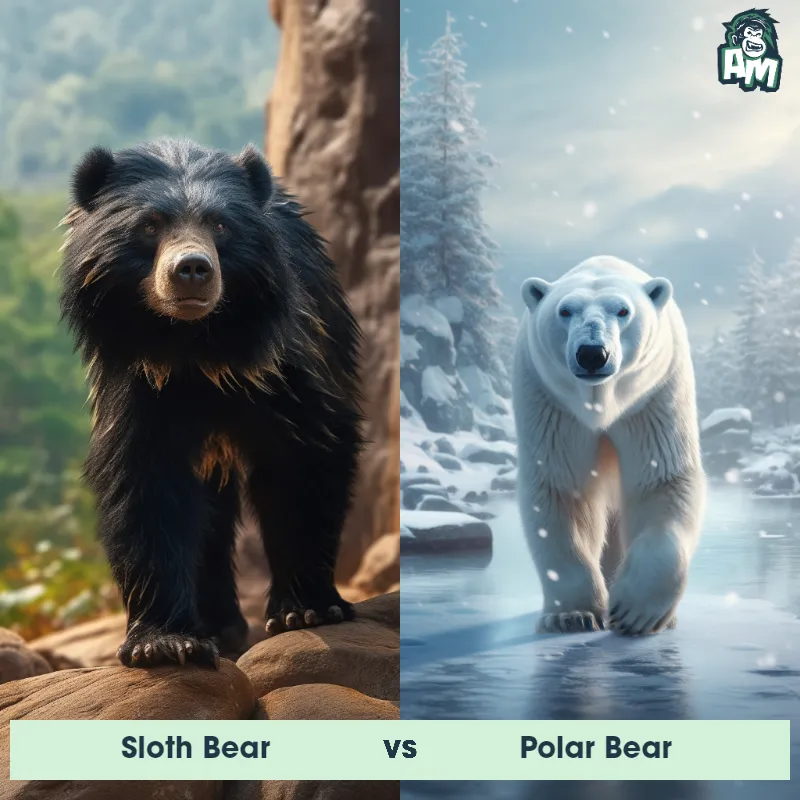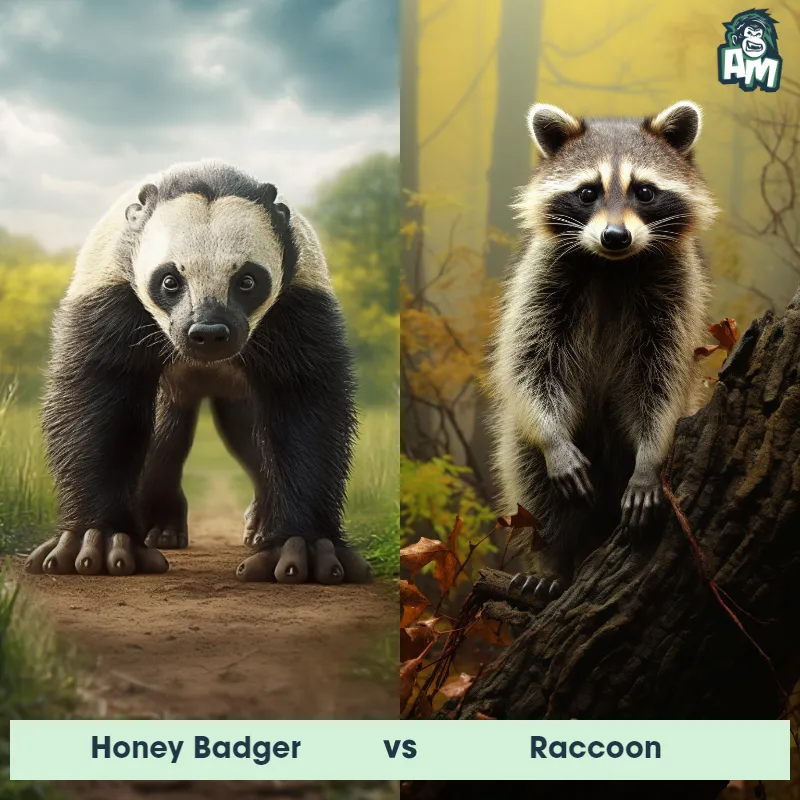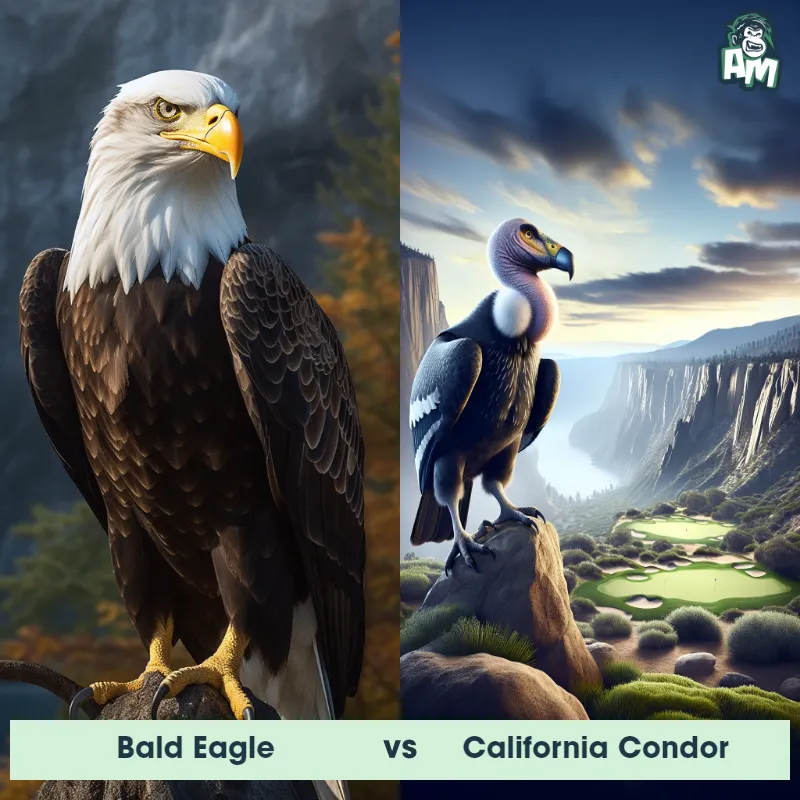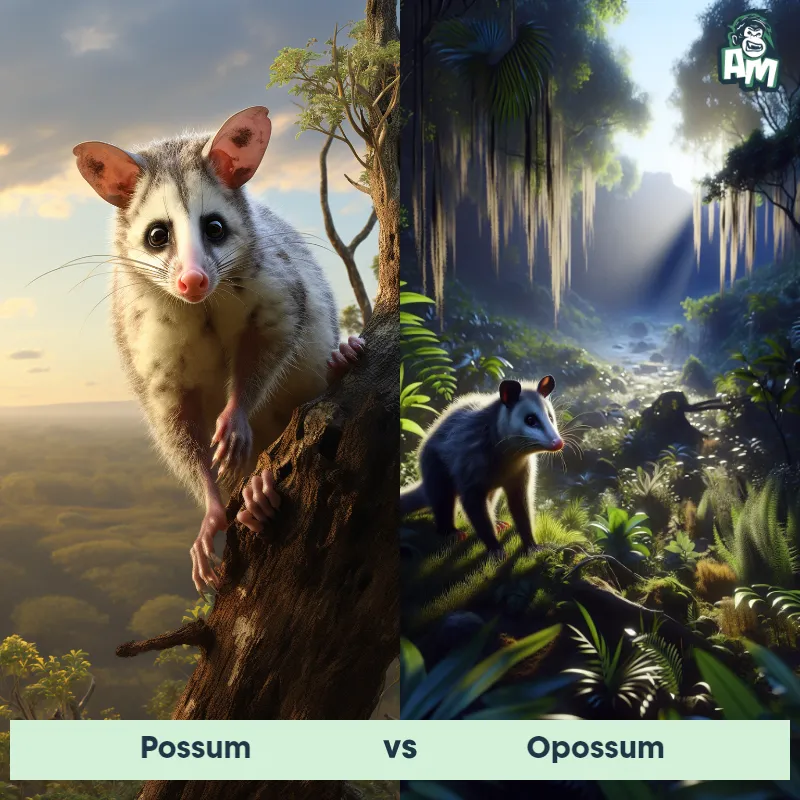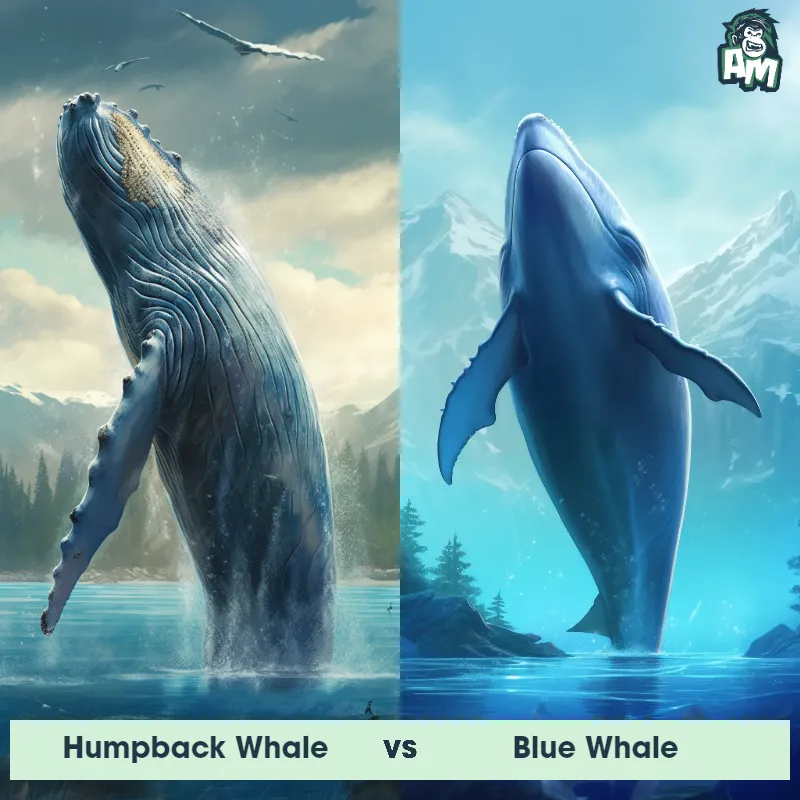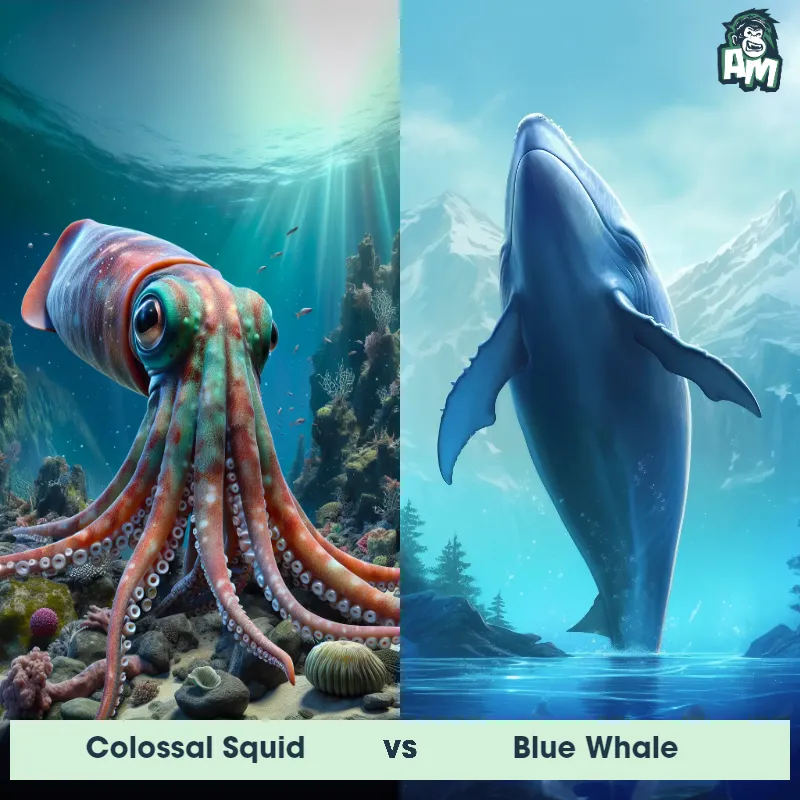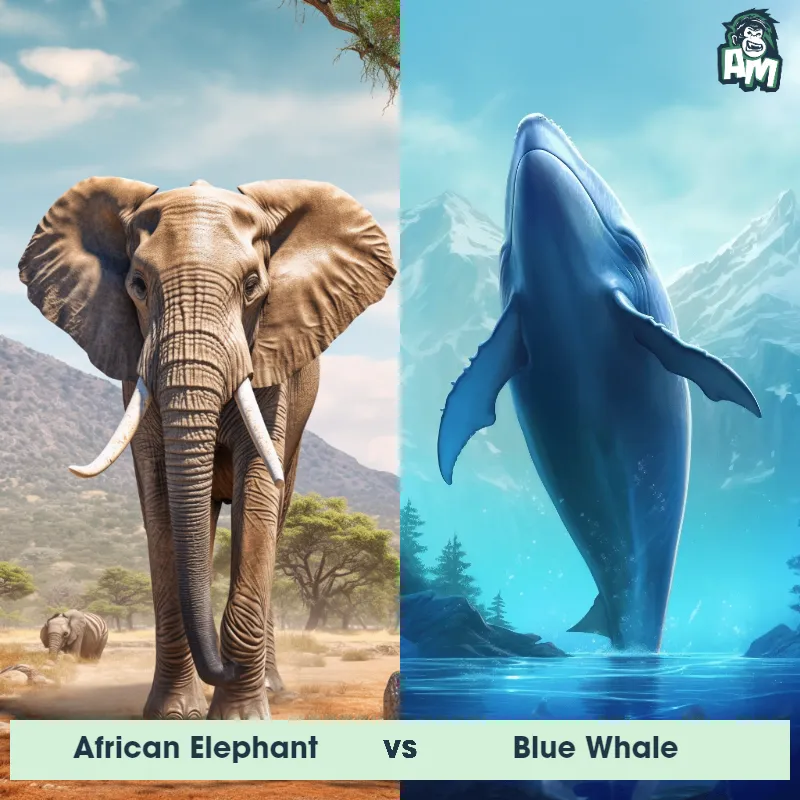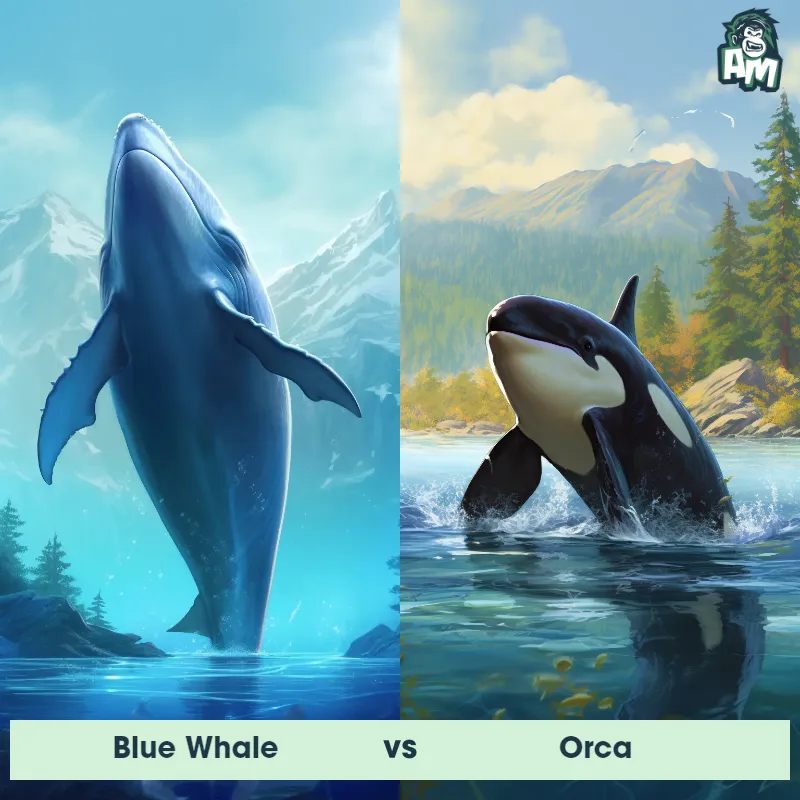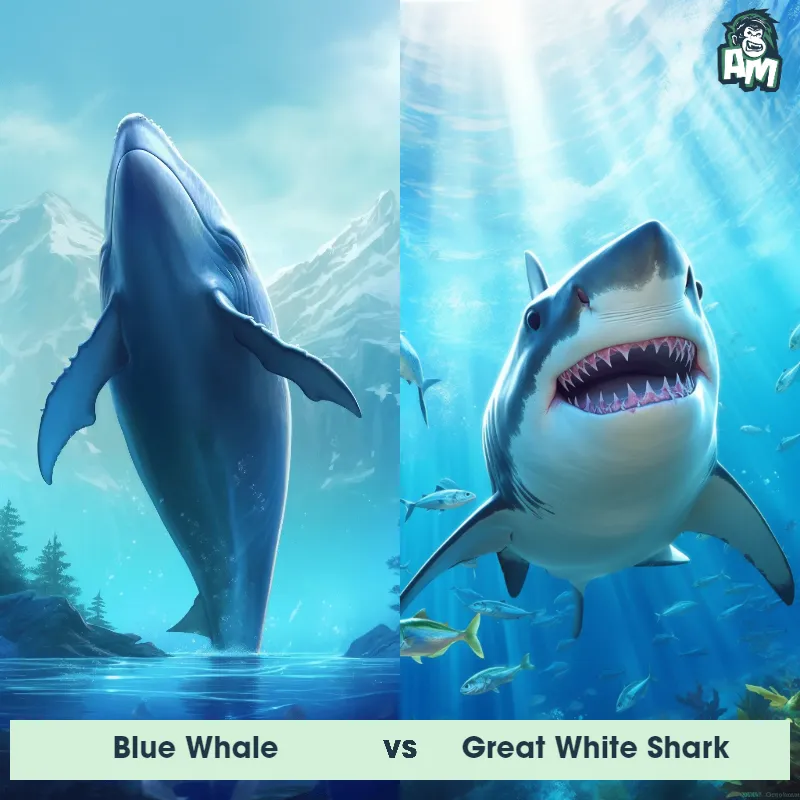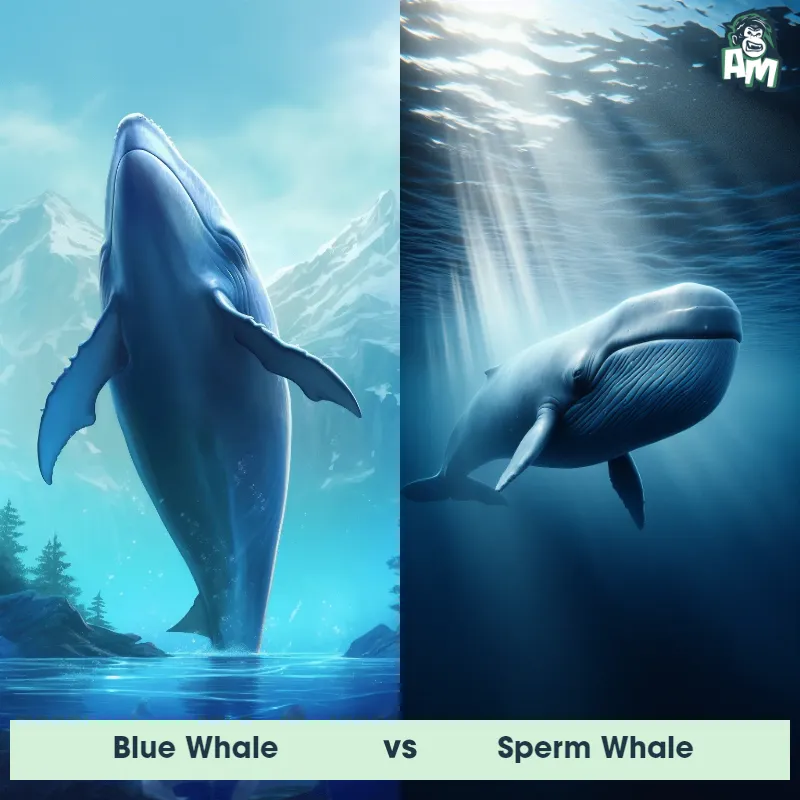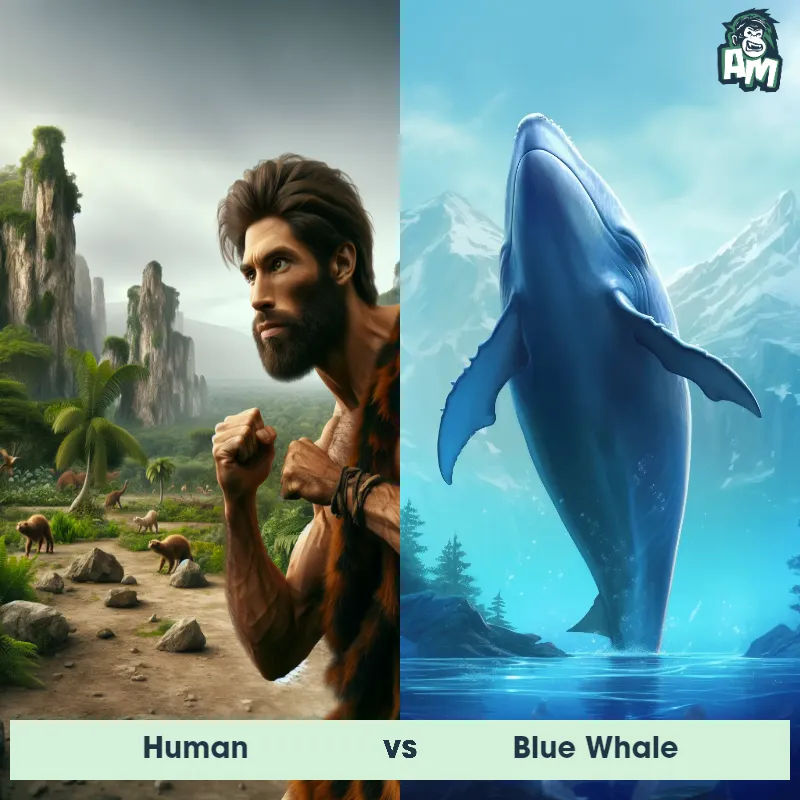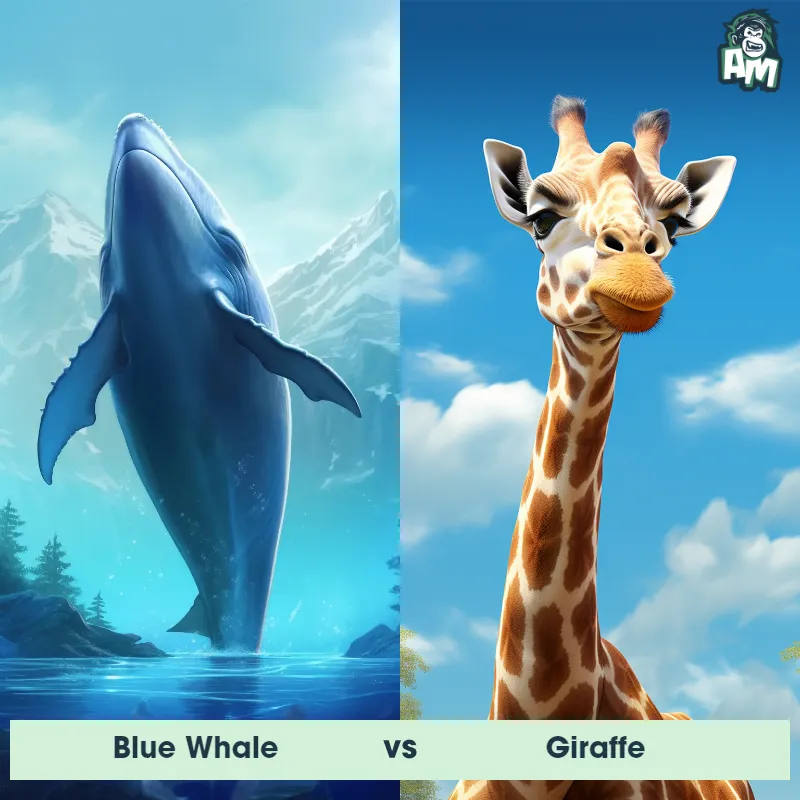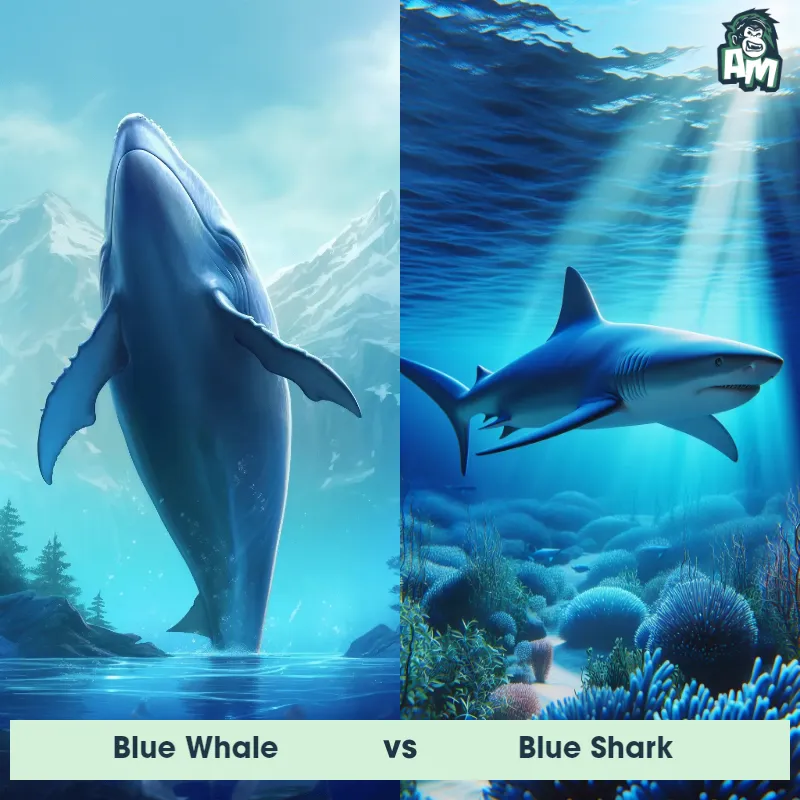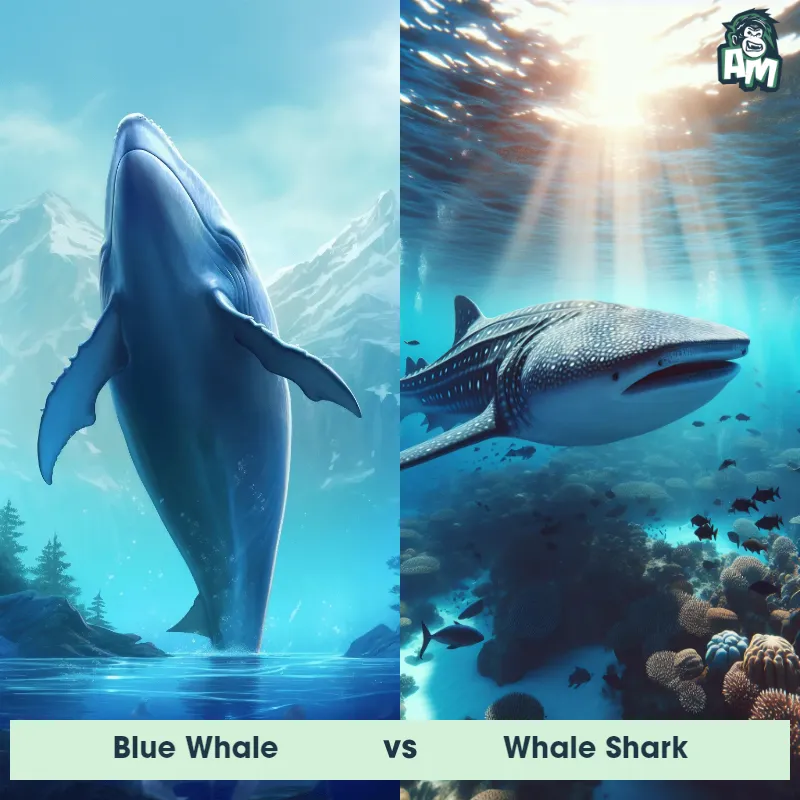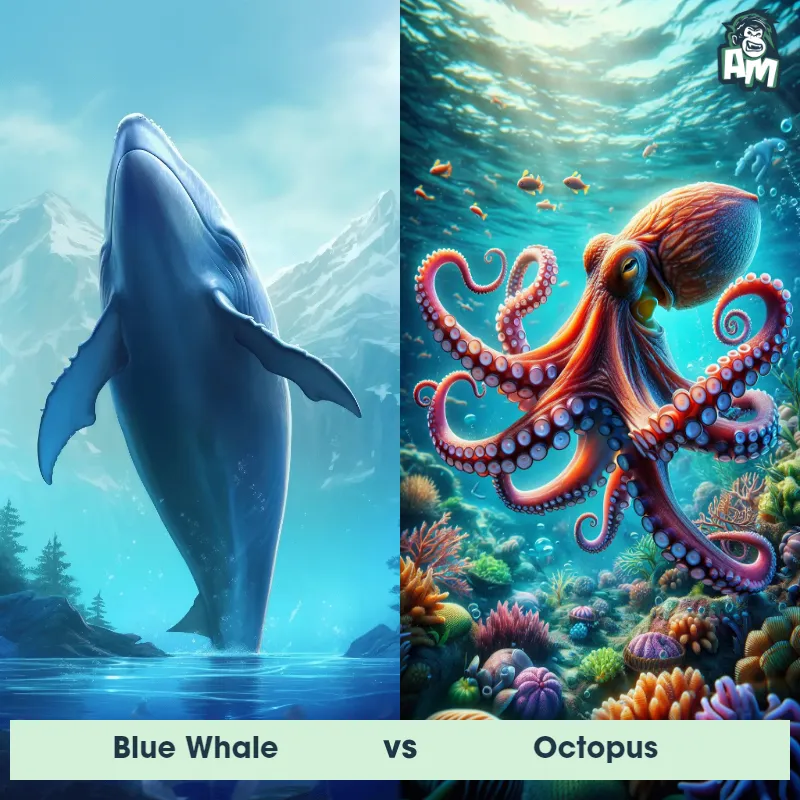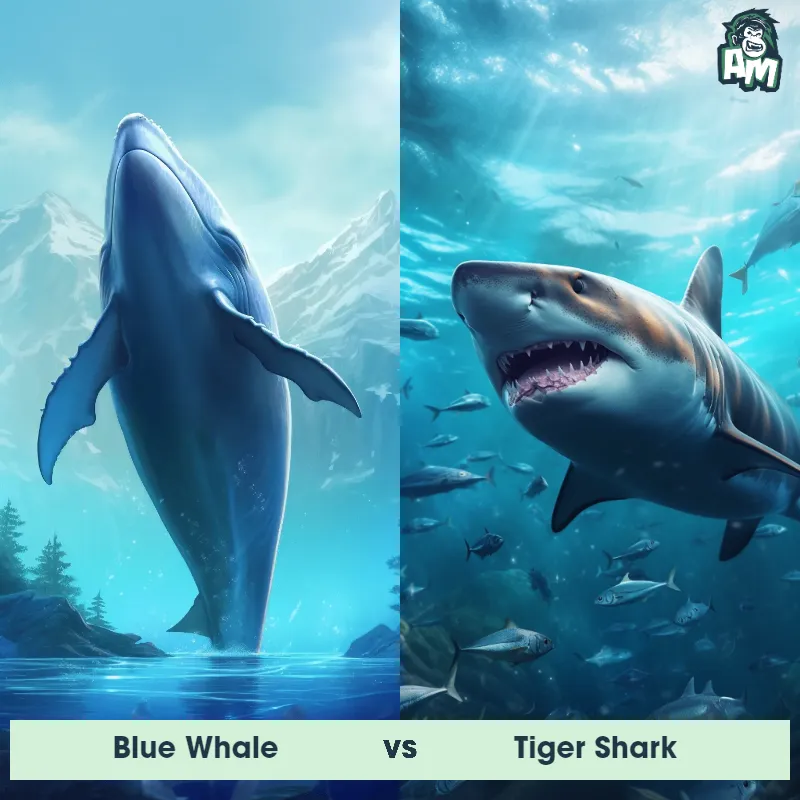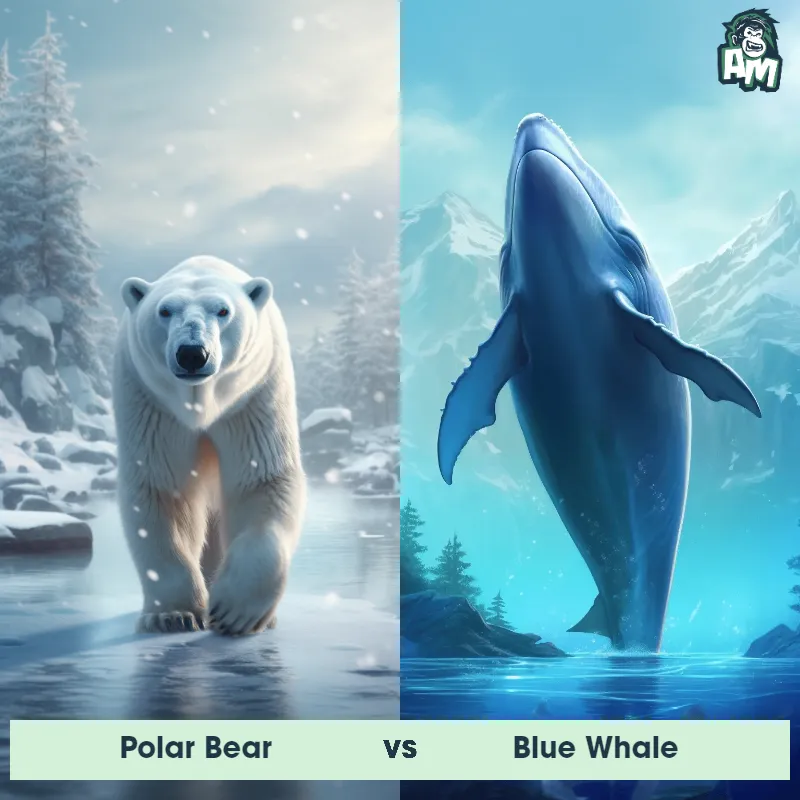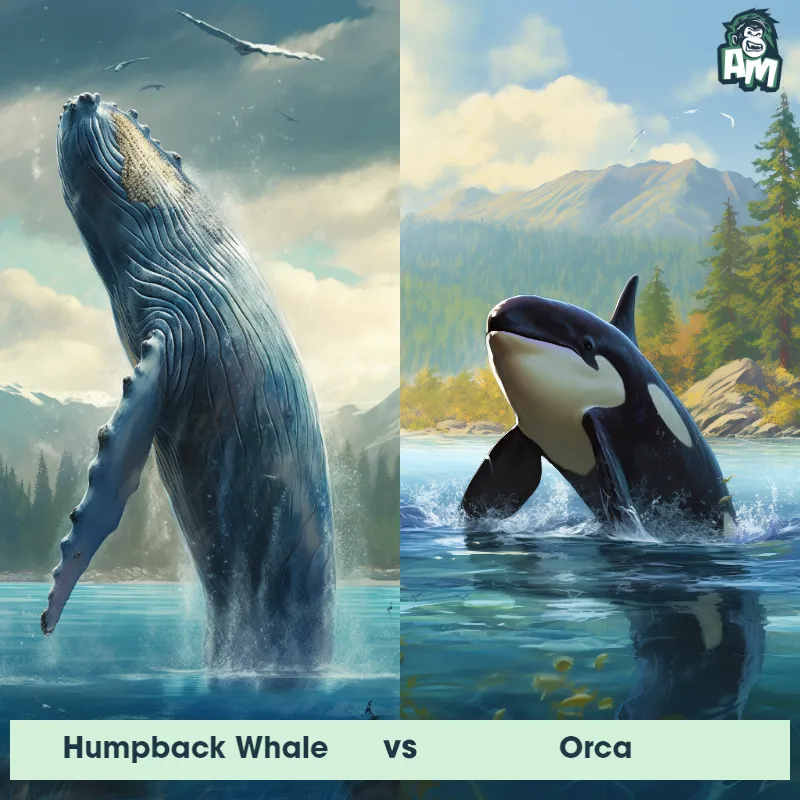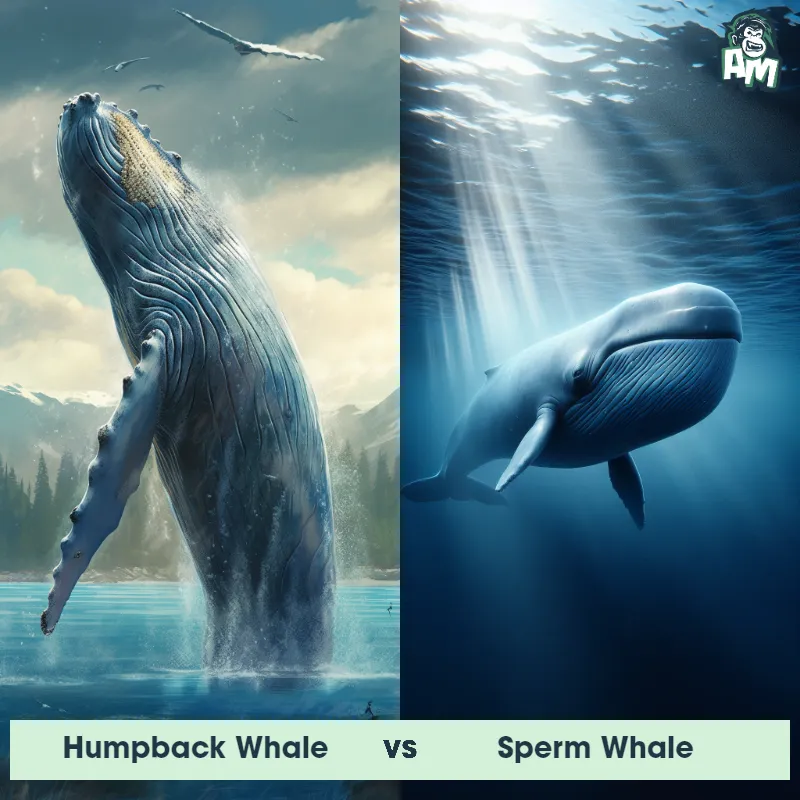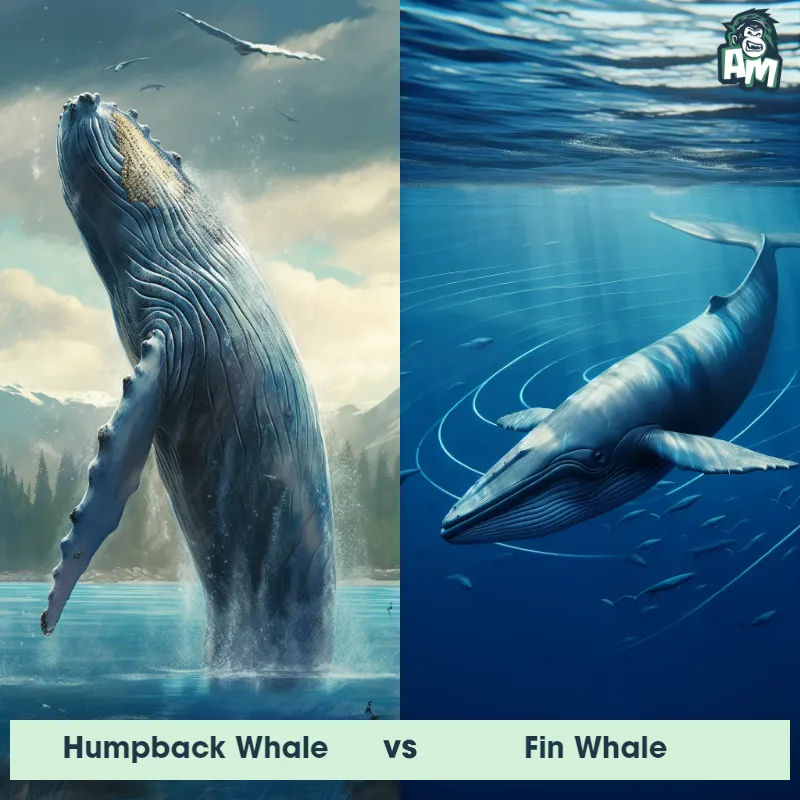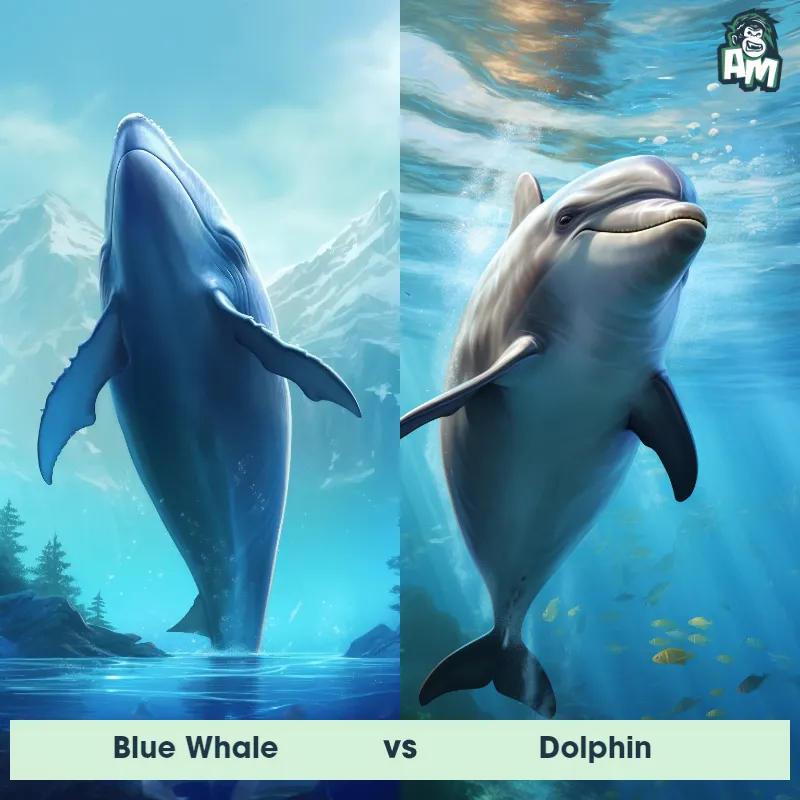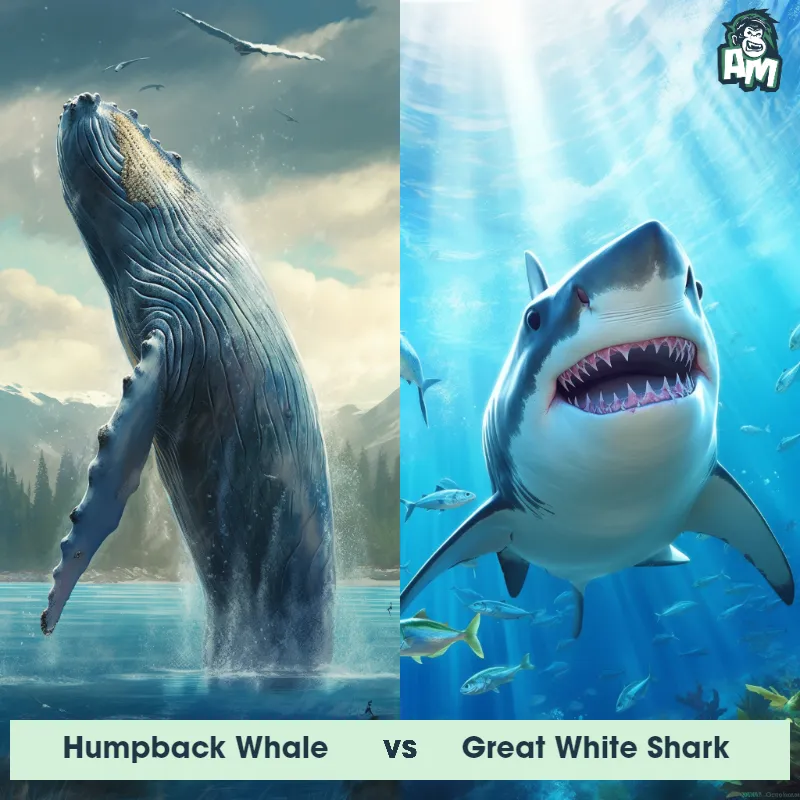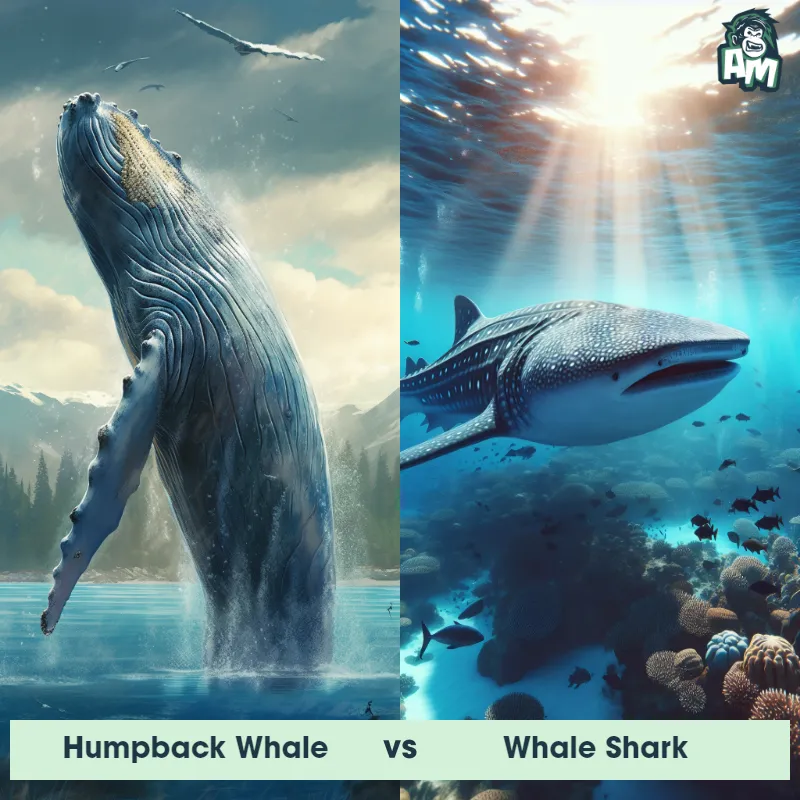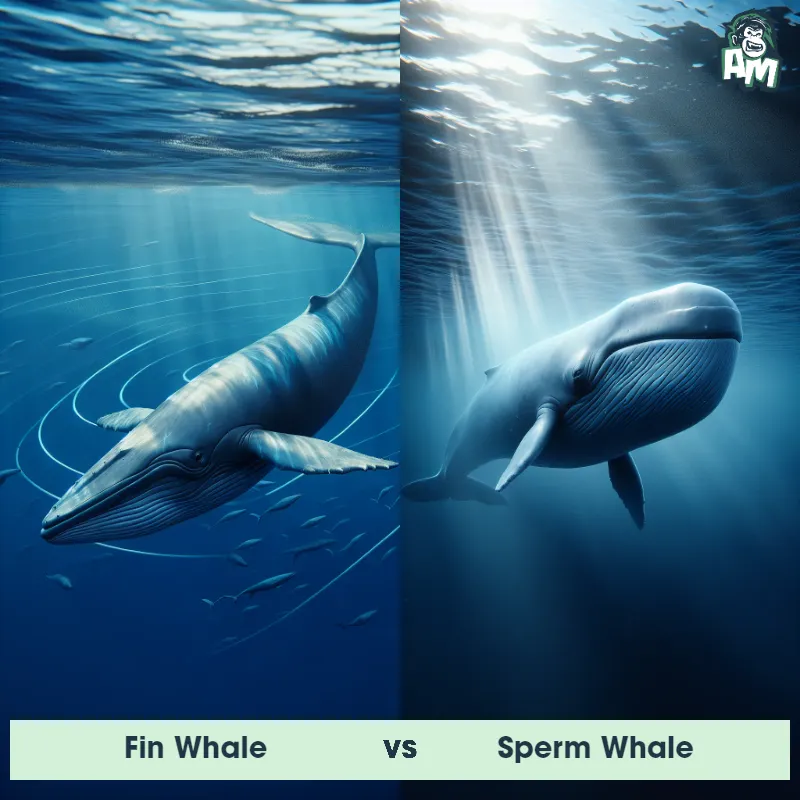Blue Whale vs Fin WhaleSee Who Wins

Ladies and gentlemen, welcome to this extraordinary matchup between two giants of the ocean! We have the Blue Whale and the Fin Whale ready to engage in a bone-shaking contest of strength and survival. It's a battle of titanic proportions here today, and we're about to witness an awe-inspiring display of oceanic power! Without further ado, let's dive into the action!
Contender 1: Blue Whale
The Blue Whale, also known as Balaenoptera musculus, is the largest animal on Earth, reaching lengths of up to 100 feet and weighing up to 200 tons. They have a long, streamlined body with a bluish-gray color and a small dorsal fin. Their diet consists mainly of krill, which they filter through their baleen plates. Blue Whales are known for their loud, low-frequency vocalizations, which can be heard for hundreds of miles.
Fun Fact: Blue Whales have the largest heart of any animal, weighing up to 1,000 pounds and being the size of a small car.
Contender 2: Fin Whale
The Fin Whale, also known as Balaenoptera physalus, is the second-largest animal on Earth after the Blue Whale. They have long, slender bodies with a sleek appearance, characterized by a V-shaped head and a prominent ridge along the back. Fin Whales can reach lengths of up to 80 feet and weigh around 70 tons. They have a mottled gray or blackish coloration on their upper bodies and a lighter shade of gray on their undersides. These whales possess a unique asymmetrical color pattern on their lower jaws, with the right side being white and the left side dark, which helps in identification. They are remarkable for their ability to swim at speeds of up to 23 miles per hour. Fin Whales are known for their distinct blow, which is tall and columnar.
Fun Fact: One remarkable fun fact about Fin Whales is that they have the ability to consume large amounts of food in a short period. During feeding, they engulf up to four tons of krill, small fish, and squid per day, which is equivalent to about 1.5 million calories.
Matchup Stats
| Blue Whale | Fin Whale | |
|---|---|---|
| Size | Up to 100 feet (30.5 meters) | Up to 80 feet (24 meters) |
| Weight | Up to 200 tons (181 metric tons) | Around 70 tons (63,500 kilograms) |
| Speed | Speed: 20 mph (32.19 km/hr) | 23mph (37km/h) |
| Key Strength | None | Powerful tail slaps |
| Biggest Weakness | Slow movement | Vulnerability to ship strikes |
Current Votes
Blue Whale vs Fin Whale
See Who Wins
View More Matches
Looking For More?
Similar Matches
Scientific Stats
| Blue Whale | Fin Whale | |
|---|---|---|
| Scientific Name | Balaenoptera musculus | Balaenoptera physalus |
| Family | Balaenopteridae | Balaenopteridae |
| Habitat | Open ocean | Open ocean |
| Geography | Worldwide | Worldwide, with a preference for colder waters |
| Diet | Krill | Krill, small fish, and squid |
| Lifespan | 80 years - 90 years | 80 years - 90 years |
Key Differences between Blue Whale and Fin Whale
- Body shape: The Blue Whale has a stockier body shape with a more bulbous head, whereas the Fin Whale has a streamlined body shape with a pointed head.
- Dorsal fin: The Blue Whale lacks a prominent dorsal fin, while the Fin Whale possesses a tall, falcate dorsal fin located approximately two-thirds along its body.
- Size: The Blue Whale is generally larger than the Fin Whale, with an average length of 82-105 feet compared to the Fin Whale's average length of 64-75 feet.
- Balaenoptera stripes: Blue Whales have light-colored, mottled grayish patches called "balaenoptera stripes" on their sides, which are absent in Fin Whales.
- Coloration: Blue Whales have a predominantly blue-gray coloration, while Fin Whales have a dark gray or brown-gray color on their back and a lighter shade of gray on their underside.
- Throat grooves: Blue Whales have grooves running from their chin to their belly, known as throat grooves, in greater number and more pronounced than those of Fin Whales.




